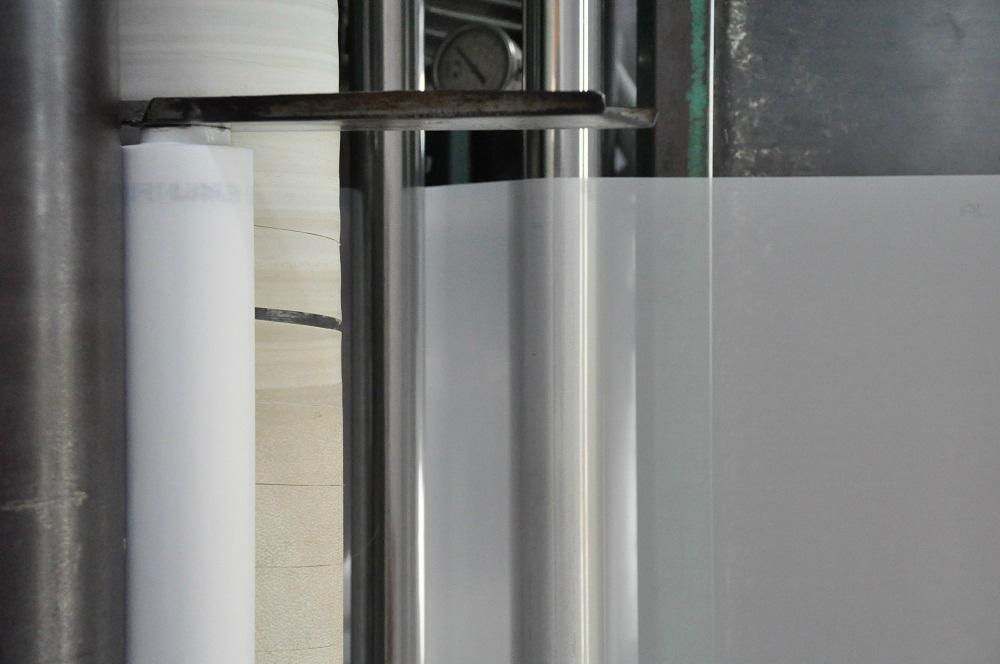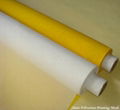| Model: | SG-Mesh-002 |
|---|---|
| Brand: | SHARE FILTRATION |
| Origin: | Made In China |
| Category: | Packaging , Printing & Paper / Printing Materials |
| Label: | screen printing mesh , printing mesh , polyester mesh |
| Price: |
¥10
/ m
|
| Min. Order: | 100 m |
Product Description
Screen printing is a printing technique that uses a woven mesh (screen mesh) to support an ink-blocking stencil. The attached stencil forms open areas of mesh that transfer ink as a sharp-edged image onto a substrate. A roller or squeegee is moved across the screen stencil, forcing or pumping ink past the threads of the woven mesh in the open areas.
Screen printing is also a stencil method of print making in which a design is imposed on a screen of silk or other fine mesh, with blank areas coated with an impermeable substance, and ink is forced through the mesh onto the printing surface. It is also known as silk screening or serigraphy.
Printing Material (Fiber Characteristics Chart)
Traditionally silk mesh was used for screen-printing, hence the name silk screening. Currently synthetic threads are commonly used in the screen printing process the most popular mesh in general use is made of polyester. There are special use mesh materials of nylon and stainless steel available to the screen printer
Printing Meshes (Screen Meshes) Provided by Share Filtration
Share Filtration provides most-commonly used printing mesh for most of printing applications, printing meshes from Share Filtration include: polyester monofilament printing mesh, polyester multifilament printing mesh, nylon monofilament printing mesh, nylon multifilament printing mesh, stainless steel printing mesh. For polyester printing mesh, white, yellow and black colors are available, usually polyester printing mesh in yellow are over 200 threads per inch.
、
Fabric Construction
Fiber Type---is an important factor when choosing a fabric suitable for your application. Common considerations are working temperature, abrasion and chemical compability, which may include the PH range of your application.
Mesh Count---is the numbder of threads per inch in the direction of warp and weft of the fabric. The mesh count is identical in both warp and weft direction for Share Filtration's woven mesh.
Thread Diameter---is specified as the diameter of the thread in microns; Yarn sizes in both warp and weft directions are the same.
Mesh Opening---is the size or space between threads. The mesh opening is the result of the combination of the mesh count and yarn size. Mesh opening will determine the size or amount of material that will pass through the fabric
Introduction:
Polyester Screen Printing Mesh Fabric is one of the most advanced high-tech screen mesh products in 1990s for screen printing.
With high quality raw material of polyester yarn, advanced weaving machines from Swiss, well-educated workersl, Share Filtration produces and supplies superior quality polyester and polyamide bolting cloth for screen printing. We also have the most advanced testing instruments and technicians well trained to guarantee a reliable quality.
Mesh Count: (10T)25 threads per inch to (165T)420 threads per inch
Width: up to 3800mm (maximum width: 3.80meters)
Color: White and Dyed (mainly white and yellow bolting cloth)
Monofilament Polyester Screen Printing Mesh(Low-elongation) Features:
Low-Elongation Monofilament Polyester Screen printing mesh is what we are producing now in a wide range of mesh counts(from 10T to 165T), and Share Filtration's polyester printing mesh offers significant advantages over the traditional monofilament polyester printing mesh:
Faster tensioning without damage to the threads
Improved fabric strength
Faster tension stabilization
Higher tension threshold and breaking point
Less tension loss during the stretching process
Faster turnaround time from the screen room to the pressroom
Improved registration due to stable tension
Faster Print Speeds
Screen Printing Mesh Applications:
CD/DVD Printing, Ceramic Decorating, Graphic Screen Printing (Glass Containers, Labels,Large Format UV Graphic, Small Format UV Graphic, Solvent Graphics, Tubes and Cartridges), Package Printing, Printed Electronics, Printing on Glass, Solar Cell Printing, Textile Printing, Tableware.
This could also help you trouble shoot if you run into problems with your print quality- you can look here to see if you are using the right mesh count. Here it is. We will be pleased to assist in selecting the right meshes for your industrial applications, you only need to submit your requests by email or filling in forms at left column, we will contact you with details.
Mesh Recommendations by Application
Graphics printing
Line artwork 230 –305
Halftone screens up to 70 lines/in. 305–380
Halftone screens from 70-133 lines/in. 380 –420
Objects (plastics, etc.)
Opaque areas 255–305
Halftone and fine lines 305–420
Garment printing
Glitter 25–60
Flock adhesive 45–125
Puff-up colors 55–125
Overprint 80 –110
Pigment ink printing,areas/lines 110 –175
Plastisol transfer 125–305
Universal fabric 125
Plastisol direct 125–305
Pigment inks, half-tone 155–255
Sublimation transfer 195–305
Textiles, flat films
Heavy décor fabrics (terry cloth, denim) 45–123
Smooth, dense fabrics (table cloths, curtains) 110–155
Light, porous material 195–305
Ceramics
Glaze printing, coarse, embossed effect 15–55
Glaze printing, medium to fine 55–155
In and under-glaze (direct printing) 110–255
Decals
Areas/lines 195–380
Fine lines/half-tone 255–420
Gold and luster inks 305–420
Glass
Automotive glass
Black surrounds for rear/side windows 125–195
Antennas 195–255
Silver paste (defroster) 195–255
Architectural glass
Windows, doors 55–195
Mirrors 195–305
Cosmetic bottles
Inks 195–305
Precious metals 305–380
Beverage
Bottles, glasses 125–305
Household
Ovens, etc. (masks) 110 –175
Ovens, etc. (lines and half-tones) 195–255
Lampshades, furniture 125–255
Advertising
Shop signs 110 –195
Printed circuit boards
Overlay solder mask 30 –45
Photosensitive solder mask 60 –175
Membrane keypads and overlays
Insulation lacquer 90 –175
Silver conductive paste 125–175
Adhesive 125–195
Transparent windows 305
Screen printing is also a stencil method of print making in which a design is imposed on a screen of silk or other fine mesh, with blank areas coated with an impermeable substance, and ink is forced through the mesh onto the printing surface. It is also known as silk screening or serigraphy.
Printing Material (Fiber Characteristics Chart)
Traditionally silk mesh was used for screen-printing, hence the name silk screening. Currently synthetic threads are commonly used in the screen printing process the most popular mesh in general use is made of polyester. There are special use mesh materials of nylon and stainless steel available to the screen printer
Printing Meshes (Screen Meshes) Provided by Share Filtration
Share Filtration provides most-commonly used printing mesh for most of printing applications, printing meshes from Share Filtration include: polyester monofilament printing mesh, polyester multifilament printing mesh, nylon monofilament printing mesh, nylon multifilament printing mesh, stainless steel printing mesh. For polyester printing mesh, white, yellow and black colors are available, usually polyester printing mesh in yellow are over 200 threads per inch.
、
Fabric Construction
Fiber Type---is an important factor when choosing a fabric suitable for your application. Common considerations are working temperature, abrasion and chemical compability, which may include the PH range of your application.
Mesh Count---is the numbder of threads per inch in the direction of warp and weft of the fabric. The mesh count is identical in both warp and weft direction for Share Filtration's woven mesh.
Thread Diameter---is specified as the diameter of the thread in microns; Yarn sizes in both warp and weft directions are the same.
Mesh Opening---is the size or space between threads. The mesh opening is the result of the combination of the mesh count and yarn size. Mesh opening will determine the size or amount of material that will pass through the fabric
Introduction:
Polyester Screen Printing Mesh Fabric is one of the most advanced high-tech screen mesh products in 1990s for screen printing.
With high quality raw material of polyester yarn, advanced weaving machines from Swiss, well-educated workersl, Share Filtration produces and supplies superior quality polyester and polyamide bolting cloth for screen printing. We also have the most advanced testing instruments and technicians well trained to guarantee a reliable quality.
Mesh Count: (10T)25 threads per inch to (165T)420 threads per inch
Width: up to 3800mm (maximum width: 3.80meters)
Color: White and Dyed (mainly white and yellow bolting cloth)
Monofilament Polyester Screen Printing Mesh(Low-elongation)
Low-Elongation Monofilament Polyester Screen printing mesh is what we are producing now in a wide range of mesh counts(from 10T to 165T), and Share Filtration's polyester printing mesh offers significant advantages over the traditional monofilament polyester printing mesh:
Faster tensioning without damage to the threads
Improved fabric strength
Faster tension stabilization
Higher tension threshold and breaking point
Less tension loss during the stretching process
Faster turnaround time from the screen room to the pressroom
Improved registration due to stable tension
Faster Print Speeds
Screen Printing Mesh Applications:
CD/DVD Printing, Ceramic Decorating, Graphic Screen Printing (Glass Containers, Labels,Large Format UV Graphic, Small Format UV Graphic, Solvent Graphics, Tubes and Cartridges), Package Printing, Printed Electronics, Printing on Glass, Solar Cell Printing, Textile Printing, Tableware.
This could also help you trouble shoot if you run into problems with your print quality- you can look here to see if you are using the right mesh count. Here it is. We will be pleased to assist in selecting the right meshes for your industrial applications, you only need to submit your requests by email or filling in forms at left column, we will contact you with details.
Mesh Recommendations by Application
Graphics printing
Line artwork 230 –305
Halftone screens up to 70 lines/in. 305–380
Halftone screens from 70-133 lines/in. 380 –420
Objects (plastics, etc.)
Opaque areas 255–305
Halftone and fine lines 305–420
Garment printing
Glitter 25–60
Flock adhesive 45–125
Puff-up colors 55–125
Overprint 80 –110
Pigment ink printing,areas/
Plastisol transfer 125–305
Universal fabric 125
Plastisol direct 125–305
Pigment inks, half-tone 155–255
Sublimation transfer 195–305
Textiles, flat films
Heavy décor fabrics (terry cloth, denim) 45–123
Smooth, dense fabrics (table cloths, curtains) 110–155
Light, porous material 195–305
Ceramics
Glaze printing, coarse, embossed effect 15–55
Glaze printing, medium to fine 55–155
In and under-glaze (direct printing) 110–255
Decals
Areas/lines 195–380
Fine lines/half-tone 255–420
Gold and luster inks 305–420
Glass
Automotive glass
Black surrounds for rear/side windows 125–195
Antennas 195–255
Silver paste (defroster) 195–255
Architectural glass
Windows, doors 55–195
Mirrors 195–305
Cosmetic bottles
Inks 195–305
Precious metals 305–380
Beverage
Bottles, glasses 125–305
Household
Ovens, etc. (masks) 110 –175
Ovens, etc. (lines and half-tones) 195–255
Lampshades, furniture 125–255
Advertising
Shop signs 110 –195
Printed circuit boards
Overlay solder mask 30 –45
Photosensitive solder mask 60 –175
Membrane keypads and overlays
Insulation lacquer 90 –175
Silver conductive paste 125–175
Adhesive 125–195
Transparent windows 305
Member Information
| SHARE GROUP LIMITED | |
|---|---|
| Country/Region: | Zhe Jiang - China |
| Business Nature: | Manufacturer |
| Phone: | 18658318635 |
| Contact: | Eric Xiang (Export Manager) |
| Last Online: | 25 Jun, 2020 |







